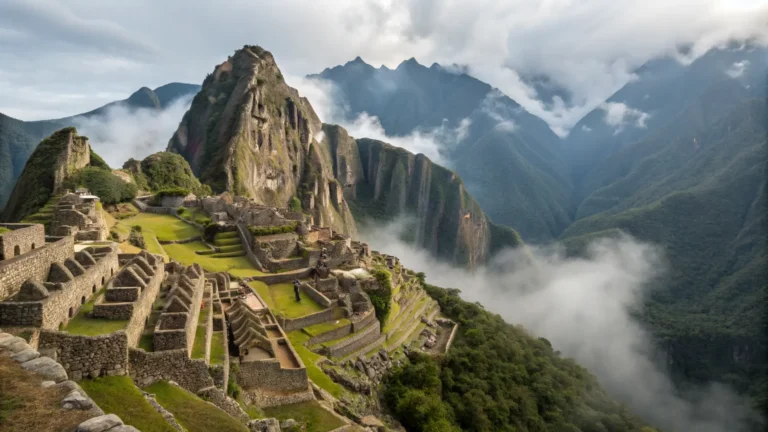Road Trip Kit 9 Things You Should Never Forget
Let me tell you about the worst 14 hours of my life. Memorial Day weekend, 2017. My cousin Jake and I were driving his dad’s ancient Ford pickup from Phoenix to Seattle – what we thought would be an epic bachelor party road trip before his wedding. Everything was perfect until we hit a construction zone outside Barstow at 2 AM.
The truck started shaking like a paint mixer. Then came the smell – burning rubber mixed with something that definitely wasn’t supposed to be hot. We limped off the freeway onto this pitch-black desert access road, and that’s when reality smacked us in the face.
No cell service. No flashlight. No clue what was wrong. Our “road trip supplies” consisted of energy drinks, beef jerky, and Jake’s wedding suit hanging in the back. We spent the night sleeping in the truck cab, taking turns staying awake to watch for coyotes (yes, they were howling nearby), until a highway patrol officer found us at sunrise.
Turns out we’d blown a radiator hose – a $12 part that would’ve taken ten minutes to replace if we’d known what we were doing and had basic tools. Instead, we paid $400 for an emergency tow and missed the first day of Jake’s bachelor weekend.
That night taught me everything about the difference between packing for a road trip and actually being prepared for one. Since then, I’ve driven over 300,000 miles across North America without another truly scary moment. Not because disasters stopped happening, but because I finally understood what real preparation looks like.
Why Most Road Trip Kits Are Garbage (And How to Build One That Actually Works)
Here’s what nobody tells you about road trip emergencies: they’re usually boring, predictable problems that become expensive nightmares because people pack like they’re going to a picnic instead of traveling hundreds of miles from home.
The Federal Highway Administration tracks this stuff, and their data is eye-opening. Over 4 million people get stranded on highways every year. Most breakdowns happen between 4 PM and 6 PM on weekdays, and Friday afternoons are absolute murder for roadside emergencies. But here’s the kicker – about 70% of these situations could be resolved by the driver with basic knowledge and simple tools.
After Jake’s wedding disaster, I started tracking every breakdown I witnessed during my travels. In three years, I counted 47 stranded vehicles. Guess how many involved catastrophic mechanical failures that required professional expertise? Four. The other 43 were dead batteries, flat tires, overheating, empty gas tanks, or locked keys inside cars.
The real game-changer isn’t having expensive gear – it’s understanding what actually goes wrong and being ready for those specific situations. Most “emergency kits” you can buy are designed by people who’ve never been stranded anywhere more challenging than a mall parking lot.
Essential Item #1: The Anti-Breakdown Arsenal
This is your first line of defense against becoming another roadside statistic. After watching my cousin’s truck die in the desert, I built what friends call “the mobile mechanic shop.” You don’t need to go that far, but you absolutely need more than the toy tools that come with most cars.
The actually useful stuff:
- Professional-grade jumper cables (16-gauge wire, 20-foot length)
- Digital tire pressure gauge and 12V air compressor
- Real tools (not toy ones): socket set, wrenches, screwdrivers
- Gorilla tape (stronger than duct tape, sticks to anything)
- LED flares or emergency triangles
- Tactical flashlight with red filter option
- Leather work gloves that actually protect your hands
That air compressor saved my hide in New Mexico last year. Hit a pothole that would’ve made a crater on the moon, and my front tire started leaking air faster than a punctured balloon. Instead of calling for help in 105-degree heat, I plugged the hole and reinflated every hour until I reached a tire shop. Total cost: $20 for a permanent patch versus $200 for emergency roadside service.
The professional jumper cables thing isn’t about showing off – cheap cables literally melt when you need them most. I watched a guy try to jump his dead battery in Montana with those thin cables from Walmart. They got so hot he couldn’t touch them, and his battery stayed dead. Good cables cost $40 but they’ll start a diesel truck in a snowstorm.
Here’s something most people miss: your emergency triangles need to be visible from 500 feet away. Those little reflectors that come with cars are useless. Real emergency triangles with LED lights can be seen from half a mile and might prevent someone from rear-ending your broken-down car at highway speeds.
Essential Item #2: Communication When Everything Fails
Modern navigation is incredible until it suddenly isn’t. I’ve lost GPS signal in places you wouldn’t expect – downtown Portland during a storm, driving through Philadelphia’s concrete canyons, anywhere in West Virginia where mountains block satellites for hours.
Your backup communication system:
- Smartphone with offline maps for your entire route plus 200-mile buffer
- Ruggedized power bank (30,000mAh minimum capacity)
- Cigarette lighter adapter with dual ports
- Current paper atlas (not some antique from 2010)
- Emergency whistle rated for 120 decibels
- Two-way radio for group travel
The offline maps thing saved my bacon driving through the Olympic Peninsula last summer. Lost cell coverage for six hours in areas where getting lost could mean spending the night in bear country. I’d downloaded detailed maps for the entire Pacific Northwest, including every backroad and trail access point. When GPS died, I still knew exactly where I was and how to get where I needed to go.
Power bank capacity matters more than people realize. Those tiny 5,000mAh units die after charging your phone twice. Real emergencies can last days, not hours. I carry a 30,000mAh unit that can charge my phone 8-10 times or power LED lights for an entire weekend. It weighs two pounds but it’s worth every ounce when you need it.
Paper maps aren’t obsolete – they’re essential backup. Digital maps show you the route but paper maps show you options. When that bridge is washed out or that road is closed for construction, a good atlas shows you three different ways around the problem instead of leaving you stranded following outdated GPS directions.
Essential Item #3: Medical Kit for Real Problems
Most first aid kits are designed for skinned knees at summer camp, not medical emergencies hundreds of miles from hospitals. Road trips are physically demanding in ways people don’t expect, and your medical supplies need to address actual problems, not theoretical ones.
Medical supplies that actually matter:
- Trauma bandages for serious bleeding
- Medical scissors and tweezers
- Pain management (prescription-strength if possible)
- Stomach medications (anti-diarrheal, antacids, nausea relief)
- Allergy medications including epinephrine if needed
- Blood pressure cuff and thermometer
- Prescription medications with 30-day backup supply
The trauma bandage thing isn’t paranoia – it’s preparation. I’ve stopped at three serious car accidents over the years, and basic bleeding control knowledge probably saved lives while waiting for paramedics. These aren’t huge wounds requiring surgery, just cuts that needed pressure and proper bandaging to prevent shock from blood loss.
Road trip stomach problems are legendary for good reason. Different water, unfamiliar food, stress, irregular eating schedules – your digestive system takes a beating. Anti-diarrheal medication has rescued more vacations than people want to admit. That roadside taco stand might taste amazing but your stomach might have other opinions six hours later.
The prescription backup thing learned me hard when I ran out of blood pressure medication in rural Wyoming. Nearest pharmacy was 80 miles away and they couldn’t transfer my prescription without calling my doctor back in California. Spent two days feeling lousy and worried while sorting out the bureaucracy. Now I always travel with extra medications and copies of all prescriptions.
Essential Item #4: Weather Protection for Every Condition
Weather changes fast when you’re covering serious distance. I’ve experienced 60-degree temperature swings in single days driving through mountain regions. Your clothes and protection need to handle whatever nature decides to throw at you.
Weather survival essentials:
- Mylar emergency blankets (pack of four minimum)
- Rain suit that won’t leak after five minutes
- Military-grade sunscreen (SPF 50 or higher)
- Layering system for temperature management
- Waterproof gear bag for electronics
- Polarized sunglasses with side protection
Those mylar blankets are miracle workers that most people use wrong. They’re not just for keeping warm – they reflect 90% of body heat, work as ground covers, emergency signaling devices, and windscreens for camp stoves. I keep four because they tear easily but weigh nothing and take up zero space.
The rain gear lesson came during a thunderstorm in Arkansas that turned our car trouble into a nightmare. Changing a tire in a downpour while wearing cotton clothes was miserable, dangerous, and completely avoidable. Now I keep proper rain gear in an easy-grab bag near the driver’s seat.
Military sunscreen isn’t overkill when you’re spending entire days in direct sunlight at high altitude. Regular sunscreen gives you maybe two hours of protection before you start frying. Military-grade formulations are designed for people who can’t reapply every hour, and they work in extreme conditions that would defeat normal products.
Essential Item #5: Nutrition Strategy for Extended Travel
Food planning makes the difference between maintaining energy for safe driving and experiencing blood sugar crashes that affect your decision-making. Most road trip food choices are terrible for sustained energy and mental clarity.
Smart nutrition approach:
- Water storage system (2 gallons per person minimum)
- Sustained-energy foods (nuts, seeds, dried fruits)
- Protein sources that don’t require refrigeration
- Comfort foods for morale during problems
- Emergency food supply rated for 72 hours
- Electrolyte replacement system
The water thing can’t be emphasized enough. I’ve driven through desert regions where summer temperatures make dehydration life-threatening within hours. Two gallons per person sounds excessive until you’re stuck in 115-degree heat waiting for help that might not arrive until evening. I keep water in multiple containers throughout the vehicle – some for drinking, some for emergencies, some for radiator problems.
Sustained-energy foods prevent the boom-and-bust cycle that makes long-distance driving dangerous. Mixed nuts provide protein and healthy fats. Dried fruits give you natural sugars without the crash of candy. Energy bars designed for endurance athletes work better than gas station snacks that spike your blood sugar then leave you exhausted.
The 72-hour emergency food concept comes from wilderness survival training. If you break down in remote areas during bad weather, help might not reach you for days. Having enough calories to maintain body heat and mental function could literally save your life. I keep military MREs that last forever and provide complete nutrition when nothing else is available.
Essential Item #6: Tools for Real Repairs
Basic mechanical knowledge and proper tools can resolve most roadside problems without professional help. After watching my cousin’s truck die from a simple radiator hose failure, I spent months learning basic automotive repair from YouTube mechanics who actually knew what they were talking about.
The functional toolkit:
- Complete socket and wrench set (metric and standard)
- Quality multitool with real pliers and cutting edges
- Electrical supplies (wire, connectors, fuses, electrical tape)
- Fluid replacement supplies (motor oil, coolant, brake fluid)
- Tire repair kit with CO2 cartridges
- Rubber mallet for stuck parts
- Safety glasses and cut-resistant gloves
The electrical supplies have saved my trips multiple times. Loose battery connections, blown fuses, corroded wires – these cause more breakdowns than people realize. Basic electrical repair knowledge and supplies can fix problems that would otherwise require towing to the nearest shop.
Tire repair kits aren’t just for punctures. I’ve fixed sidewall damage, valve stem problems, and bead leaks using proper tire repair supplies. The CO2 cartridge inflators work faster than electric compressors and don’t drain your battery. They’re one-time use but they’ll get you rolling immediately.
The rubber mallet thing sounds weird but it’s incredibly useful. Sometimes using the appropriate tool and patient coaxing may remedy seemingly insurmountable issues like damaged exhaust pipes, frozen suspension parts, and stuck brake drums. I’ve unstuck countless parts using controlled impacts that would be impossible with regular hammers.
Essential Item #7: Comfort and Morale Management
Road trips involve lots of waiting – for weather, for repairs, for traffic to clear. Having ways to stay comfortable and entertained can prevent stress from turning minor problems into relationship-ending arguments.
Psychological survival gear:
- Offline entertainment library (audiobooks, podcasts, music)
- Portable games that work without electricity
- Comfortable seating and sleeping gear
- Mood lighting for camp setup
- Communication tools for staying connected with home
- Hobby supplies for downtime activities
The offline entertainment thing is crucial for mental health during extended delays. I always download new content before trips – something about fresh material makes waiting time pass faster. Books on tape can make eight-hour driving days feel like two hours when you’re absorbed in a good story.
Comfortable seating affects your driving safety more than people realize. Poor posture and back pain make you restless, affect your concentration, and increase accident risk. A good seat cushion and lumbar support aren’t luxuries – they’re safety equipment that keeps you alert during long driving stretches.
Camp lighting transforms your attitude during evening delays. Proper LED lanterns create a comfortable space around your vehicle instead of leaving you sitting in darkness feeling helpless. Good lighting also provides security and makes emergency repairs possible after sunset.
Essential Item #8: Documentation and Legal Protection
A well-organized file system can save little problems from turning into significant financial or legal ones. Getting pulled over without proper documentation, having insurance problems after accidents, or being unable to prove vehicle ownership can turn simple situations into expensive nightmares.
Critical paperwork system:
- Waterproof document storage with multiple sections
- Complete insurance information including claim procedures
- Vehicle registration and title information
- Emergency contact information for multiple scenarios
- Medical information and prescription details
- Roadside assistance memberships and contact numbers
The waterproof storage thing saved me during a flash flood in Texas. Water got into everything, but my important documents stayed dry and readable. I use military-style document protectors that seal completely and float if dropped in water.
Insurance information needs to include more than just your card. Claim procedures, phone numbers for different types of emergencies, policy limits and coverage details – information you’ll need when stressed and not thinking clearly. I keep a one-page summary of everything important about my coverage.
Medical information becomes critical if you’re unconscious or unable to communicate. Allergies, chronic conditions, medications, emergency contacts – details that could save your life if you can’t provide them yourself. Keep this information with your insurance cards where emergency responders know to look.
Essential Item #9: Financial Emergency Planning
Cash still matters on road trips more than people realize. Small towns, emergency situations, places where card readers don’t work – having multiple financial options can make the difference between solving problems quickly and being stuck waiting for banks to open.
Financial backup strategy:
- Cash in mixed denominations ($500-1000 depending on trip length)
- Multiple credit cards from different banks
- Emergency fund access through various methods
- Roadside assistance with different coverage levels
- Emergency contact for financial help if needed
I keep cash hidden in four different locations throughout my vehicle and gear. Wallet, glove compartment, emergency kit, and one place I won’t mention in writing. If one location gets compromised, I still have options. Small bills are essential – try buying gas with hundred-dollar bills and watch the reaction.
Multiple credit cards from different banks protect against fraud holds that can strand you financially. My primary card got flagged driving through Nevada, apparently because spending money in four states in two days looked suspicious to their computers. Having backup cards from different banks kept everything moving smoothly.
Emergency fund access means knowing how to get larger amounts of money quickly when needed. Major repairs, medical emergencies, emergency flights home – situations requiring more cash than you’re carrying. Know your bank’s policies for emergency wire transfers and have contact information easily accessible.
Advanced Organization for Quick Access
All this equipment is worthless if you can’t find it during emergencies. Organization isn’t about looking professional – it’s about accessing critical supplies when you’re stressed, tired, or working in darkness.
I’ve developed a four-zone system based on access frequency and emergency priority:
Zone 1 (Driver’s seat area): Items needed while driving or in immediate emergencies – phone charger, flashlight, first aid basics, emergency cash.
Zone 2 (Passenger compartment): Daily-use items that need protection from weather – electronics, snacks, water, entertainment, important documents.
Zone 3 (Trunk/cargo area): Emergency supplies that stay in the vehicle – tools, repair supplies, bulk water, emergency food, spare clothes.
Zone 4 (External storage): Items that can handle weather exposure – recovery equipment, external tools, bulk supplies that don’t fit inside.
Color-coding containers makes identification automatic under stress. Red for medical emergencies, yellow for tools and repair, blue for comfort and daily needs, clear containers so you can see contents immediately.
The key is muscle memory – knowing exactly where everything is without conscious thought. During real emergencies, you don’t want to waste time or mental energy searching for equipment you definitely packed somewhere.
Seasonal Kit Modifications
Your road trip kit shouldn’t be identical year-round. Different seasons bring different challenges, and your preparation should adapt to realistic weather and road conditions.
Summer modifications:
- Triple water supplies for desert travel
- Cooling strategies for extreme heat
- Sun protection for extended outdoor time
- Heat-related breakdown preparations
Winter additions:
- Cold weather survival gear
- Ice and snow driving equipment
- Extended heating solutions
- Winter clothing even for short trips
I learned about seasonal adaptation during a November trip through Colorado that went from 70-degree sunshine to white-out blizzard conditions in four hours. The winter gear I’d packed “just in case” became lifesaving equipment when I had to wait six hours for road conditions to improve enough for safe travel.
Seasonal changes aren’t just about adding items – they’re about completely rethinking your priorities. Summer’s focus on cooling and hydration gives way to winter’s emphasis on warmth and traction. Your core safety equipment stays the same, but seasonal additions can mean the difference between discomfort and genuine danger.
Budget-Conscious Kit Development
Effective preparation doesn’t require unlimited budgets or premium versions of everything. Smart shopping and gradual development can create highly functional kits without financial stress.
Cost-effective building strategies:
- Start with life-safety essentials, add convenience items later
- Buy quality versions of items you’ll use frequently
- Find acceptable alternatives for occasional-use equipment
- Build gradually based on actual travel experience rather than theoretical needs
- Focus spending on items where quality makes safety differences
My first serious road trip kit cost $120 and fit in two medium boxes. It wasn’t comprehensive, but it covered genuine safety needs and common problems. Over five years, I’ve upgraded specific items and added capabilities based on actual experiences, not marketing hype or gear reviews.
The most expensive items in most kits are power tools and electronic equipment. You can build effective kits using manual tools and basic electronics, then upgrade to powered versions as budget allows. A manual tire pump works fine if you’re not in a hurry, and basic LED flashlights provide the same illumination as expensive tactical models.
Quality matters most for items that face heavy use or safety-critical applications. Jumper cables, first aid supplies, and emergency communication equipment justify higher spending because failure could be dangerous. Comfort items and convenience tools can be budget versions that you replace if they prove inadequate.
Real-World Testing and Maintenance
The most dangerous road trip kit is one that’s never been tested or maintained. Equipment that doesn’t work when needed creates false confidence that can be more dangerous than having no equipment at all.
Testing and maintenance schedule:
- Monthly: Check expiration dates, battery levels, fluid containers
- Seasonal: Test all electronic equipment, replace weather-damaged items
- Pre-trip: Verify everything works and is easily accessible
- Post-trip: Replace used items immediately, note needed improvements
I schedule kit testing during routine car maintenance. While the oil is being changed, I test all electronic equipment, check expiration dates, and verify that tools work properly. This regular maintenance prevents surprises when equipment is actually needed.
Battery maintenance deserves special attention. Flashlights with dead batteries are useless. Power banks that won’t hold charge leave you stranded without communication. I rotate batteries through regular use so they’re always fresh, and I test everything monthly using a simple checklist.
The post-trip analysis habit has improved my kit more than any other single practice. After every trip, I note what worked well, what was missing, and what proved unnecessary. This real-world feedback prevents theoretical preparation that looks good on paper but fails in actual use.
Your Kit is Independence Insurance
After hundreds of thousands of miles and dozens of adventures, here’s what I’ve learned: your road trip kit doesn’t just prepare you for disasters. It purchases independence from fear, uncertainty, and dependence on others for solving problems you can handle yourself.
The confidence that comes from real preparation transforms how you approach travel. Instead of worrying about what might go wrong, you start looking for interesting detours. Instead of avoiding challenging routes, you embrace adventures that test your capabilities. Instead of being a victim when problems occur, you become the hero who fixes things and helps others.
That desert breakdown with my cousin taught me that preparation isn’t paranoid – it’s liberating. Every tool I’ve mentioned has either saved one of my trips or made it significantly better. More importantly, knowing I can handle most situations means I take bigger adventures and create better stories.
Your road trip kit is an investment in possibilities. When you’re truly prepared, the open road becomes an invitation instead of a risk. Problems become interesting challenges instead of trip-ending disasters. You stop limiting your adventures based on fear and start planning them based on curiosity.
Start building your kit today, but start smart. Focus on safety first, then build capabilities based on your actual travel style and destinations. Test everything before you need it, maintain equipment regularly, and learn from every trip.
The highway is calling, and now you’ll have the confidence to answer with excitement instead of anxiety. Drive safe, stay prepared, and never forget that the best adventures happen when you’re ready for anything the road can deliver.
What’s your worst road trip disaster story? Share it in the comments along with what you learned – we all get better at this by learning from each other’s adventures and mistakes.




